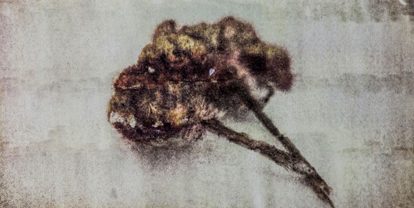Unseen Amsterdam 2019
Group Exhibition
September 20 — September 22, 2019
Experience is unique for every person, tailor-made like gloves, always prone to wear and tear: unless memory and recreation slows down the degradation process. Memories are artificial constructs that we inject to our lives in order to retain our experiences and conserve our thoughts. All four artists of Mohsen Gallery, Sasan Abri, Arya Tabandehpoor, Vahid Dashtyari, and Gohar Dashi, have adopted an approach in their recent series that entail their different takes on photography, but converge on preserving the memory and slowing down the decaying process of experience. Beyond thematic considerations, Mohsen Gallery is concerned with technique and taking risks for applying it: Sasan Abri with his ascetic approach to photographic processing, Arya Tabandehpoor by taking a playful peek into the digital spirit of photography, Gohar Dashti by representing a nineteenth-century technique, and Vahid Dashtyari with his fake authenticity.
The drawing-like photographs of Sasan Abri’s “Expedition” series is the outcome of his everyday explorations and wanderings, captured in an urban context. However, neither the people nor the quality of the camera is significant. Moreover, historical references and public event do not magnify anything: these analog photographs recreate memories that are only known to the artist. The blurry ambience that Abri has put together from his everyday meanderings through the city, and the way he has transferred the images from the dark surface of film to the bright surface of paper, are like organizing small fragments of a larger whole and an attempt to accumulate and remember scatted recollections and externalize them.
Before referring to him as a photographer, we should consider Aria Tabandehpoor as an explorer, who searches for the potential of materials and objects to change the way they are used; he also happens to know how to take photographs and manipulate them. He usually depicts processes of failure and defeat in various ways. In his recent series, “Hollow,” he represents portraits in which the trace of time is reflected schematically: the owners of these multilayered portraits have days behind them, and there are days ahead of them. Consisted of 365 kaleidoscopes, Tabandehpoor’s “Corruption” series repeat glitch images in its cubic structure. The images, which include notes in some cases, are visual documents that the artist has retained through the years due to his specific interest. Here, however, he has corrupted them with glitch-like effects.
The rebellious female spirit of “Sill Life” seem to tame the audience by externalizing memories and objectifying past events. In this series, Gohar Dashti has utilized of a nineteenth century technique with unique, sensual proportions and retro colors to explore a feminine memory, treating it like a taxidermist. As a result, she preserves her delicate memories from oblivion and corruption by sealing them.
In his “The Pencil of Lie” series, Vahid Dashtyari seeks to find the lost spirit of authenticity in photography and highlight the photography’s uniqueness to images that seem to be banal, bogus, and stale. The title alludes to Henry Fox Talbot’s The Pencil of Nature, emphasizing the vanity of Instagram images. Even though the photos that the users of social networks post on the virtual space are characterized by a certain time and place, they are at the same time devoid of them. Being double-tapped, shared, and reposted numerous times in the unreal context of the digital world, these images no longer possess that unique and authentic spirit of photography. “The Pencil of Lie” is searching for a lost spirit, making use of a photographic process to return to the photography’s origins.
